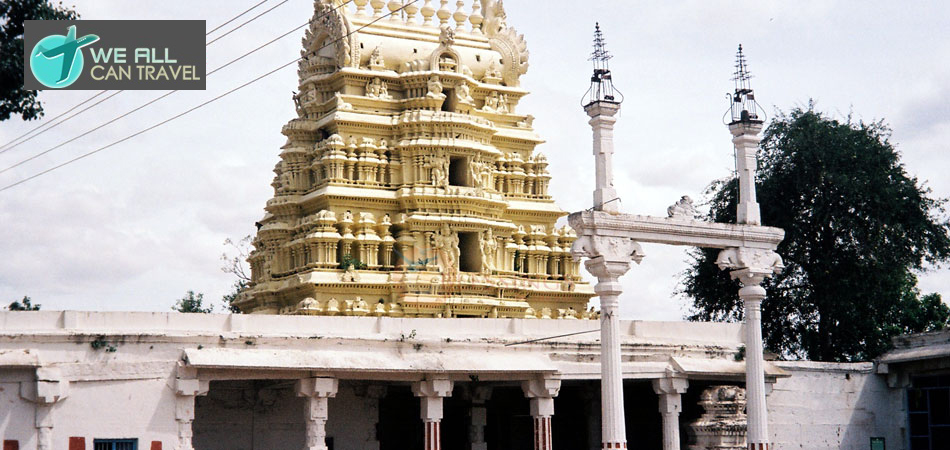Kanyadevi Temple Kanyakumari
The 3000 year-old Kumari Amman (Mother) temple at Kanyakumari is dedicated to goddess Kanyakumari. The name Kanyakumari literally means ‘virgin goddess." She stands in eternal vigil protecting the land. The temple is surrounded by a stone wall and stands on the edge of the ocean.
Legend has it that the Goddess Parvati in one of her incarnations as Devi Kanniya did penance on one of the rocks of this land's end to obtain the hand of Lord Shiva Kanyakumari, picturesquely situated at the Lands End at the confluence of the Arabian Sea, the Bay of Bengal and the Indian Ocean, has been a major attraction for both tourists and pilgrims alike .
The blue-stone Deity, believed to have been installed by sage Parshurama, stands as a charming, young girl in her penance with beads in her right hand, and a sparkling nose jewel that spreads lustrous radiance. It is believed that the nose ring of Devi Kanyakumari set with rubies is so bright that it could be seen from far at night. It is said that some ships sailing in the sea, mistaking the brilliance of the rubies for the light of a lighthouse, went off-shore and hit some rocks nearby. Thus, the eastern side gate of the temple is always kept closed except on some rare occasions when the Deity is taken out for a ceremonial bath.
During the Mahabharata war, Lord Balarama did not wish to participate in the war and decided to go on a pilgrimage. Kanyadevi Temple is one of the temples that He had visited. Lord Sri Chaitanya Mahaprabhu also visited this temple during His South India tour. Kanyadevi temple is also said to be one of the hundred and eight Durga-alayas or temples dedicated to goddess Durga.
 >> Agasteeshwara Temple
>> Agasteeshwara Temple >> Anantha Padmanabhaswami Temple
>> Anantha Padmanabhaswami Temple >> Ananthasana Temple
>> Ananthasana Temple >> Annapoorneshwari Temple
>> Annapoorneshwari Temple >> Arunachaleshwar Temple
>> Arunachaleshwar Temple